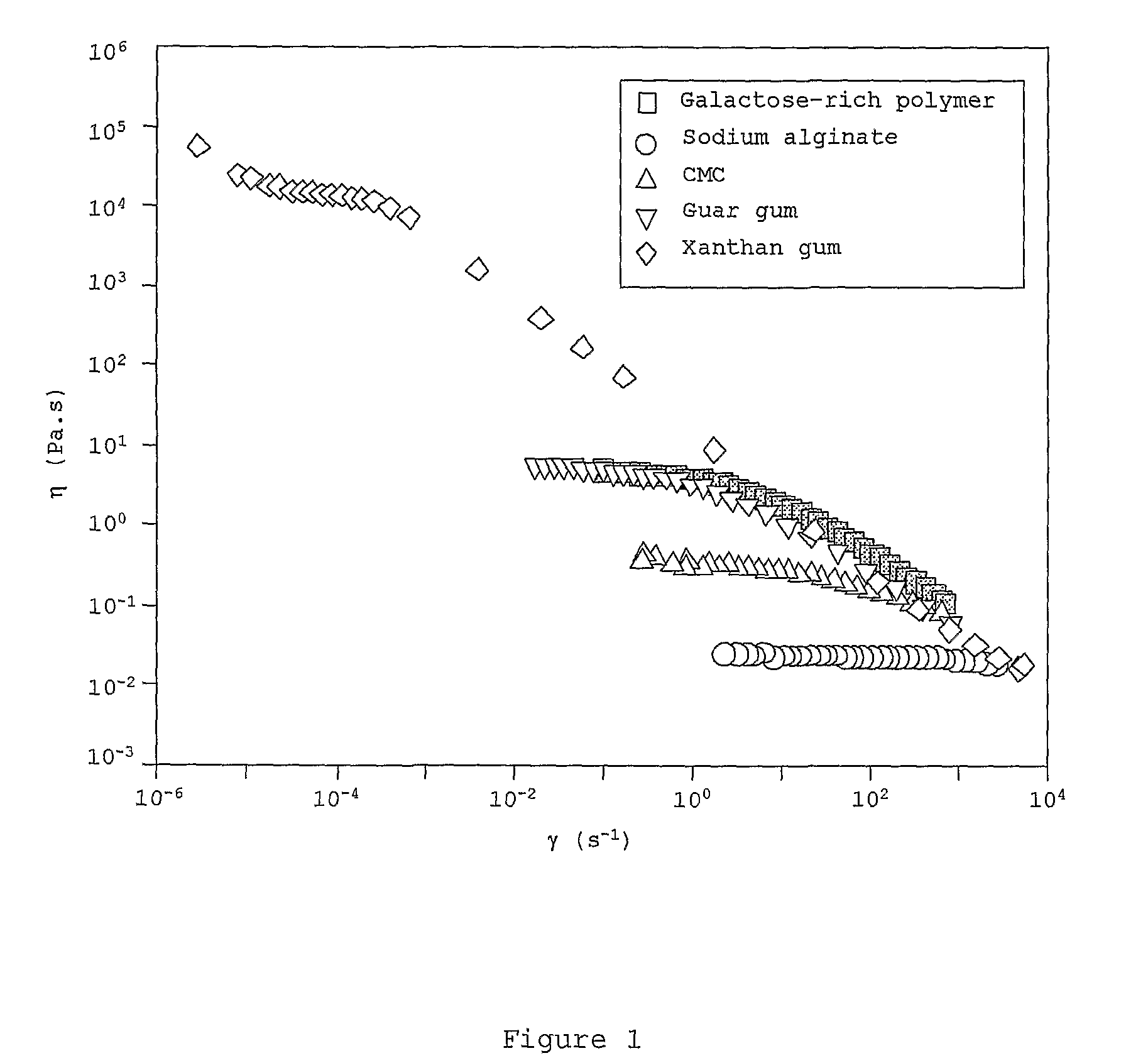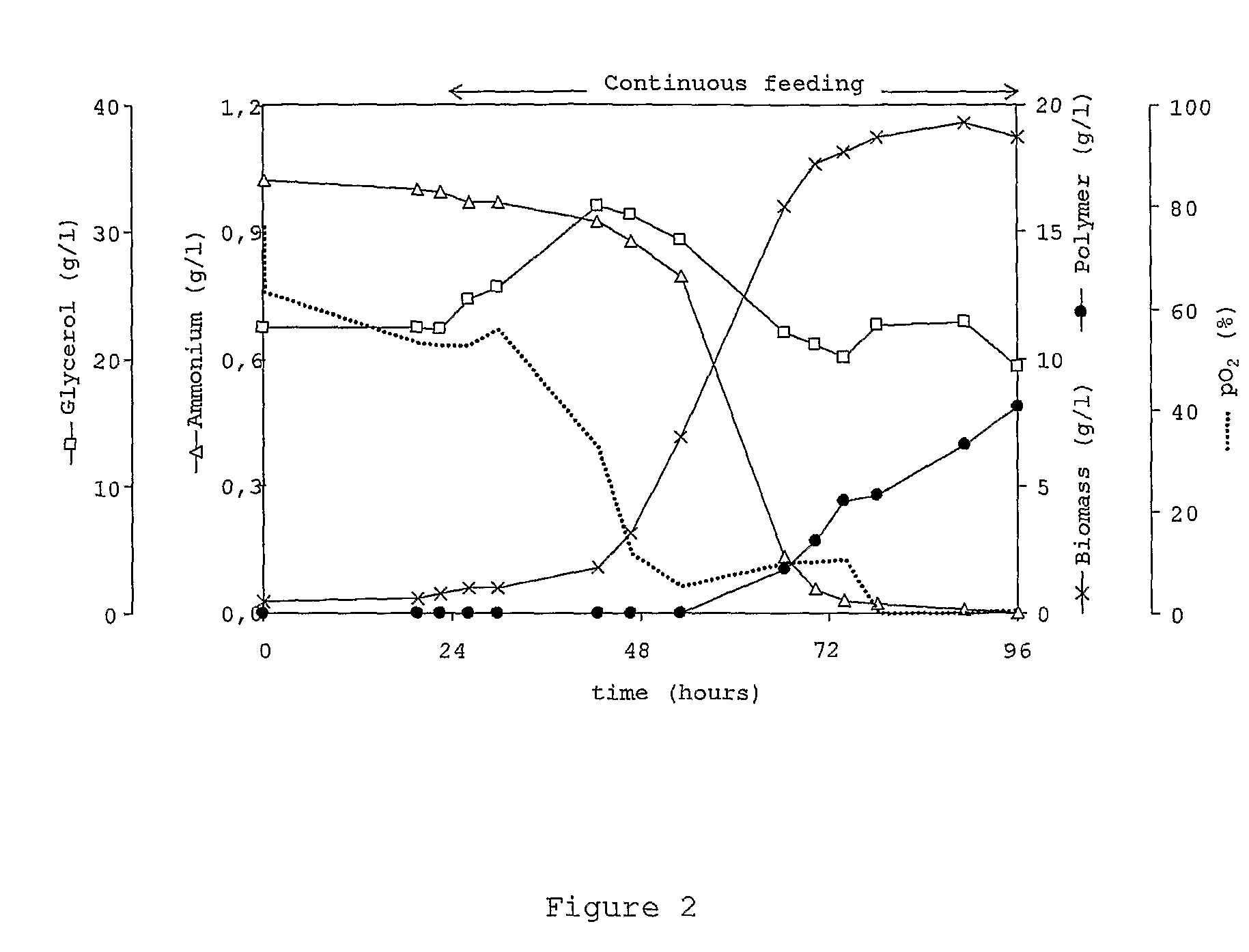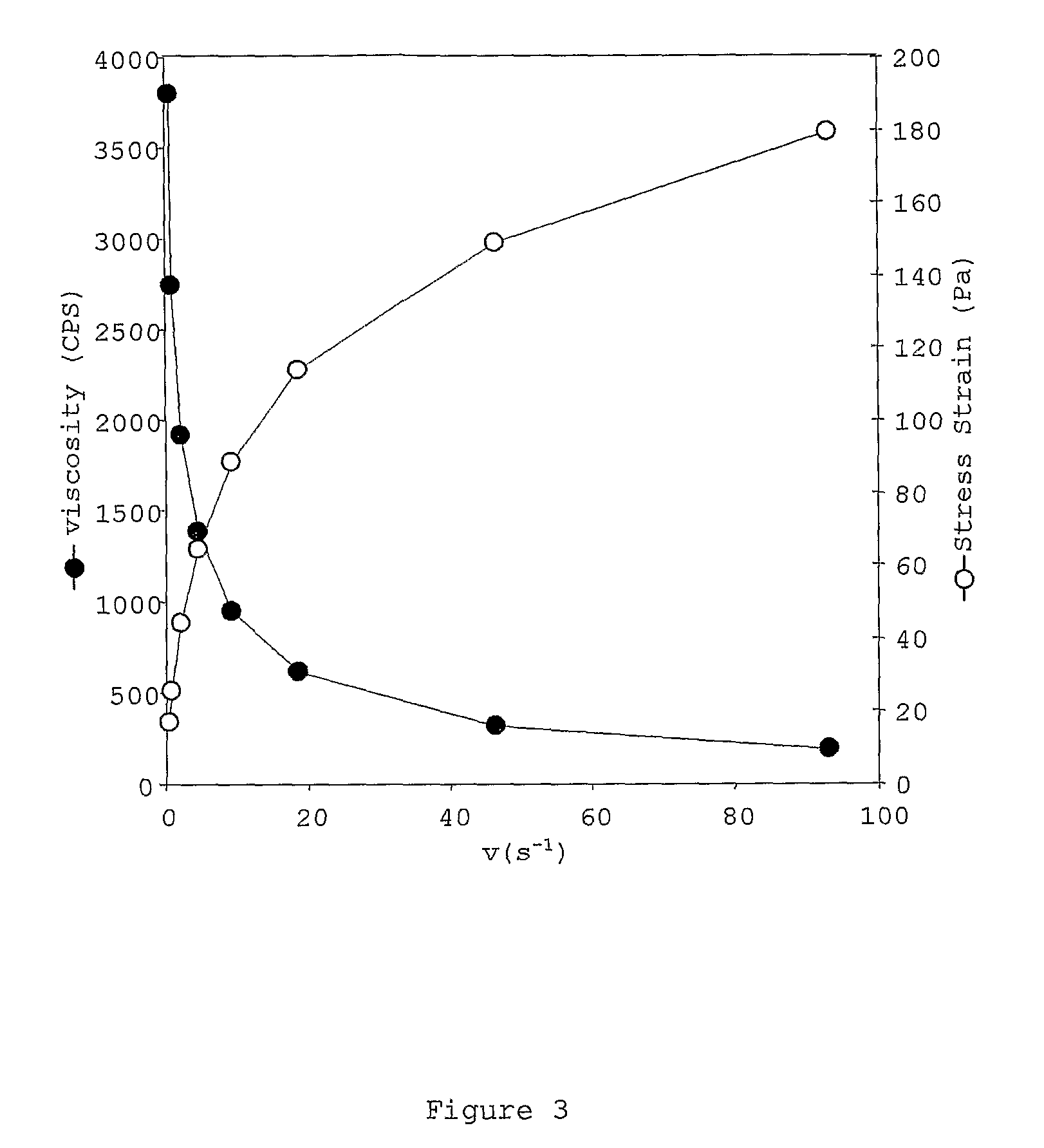Galactose-rich polysaccharide, process for the production of the polymer and its applications
a polysaccharide and galactose technology, applied in the field of biopolymer, can solve the problems of difficult to obtain public acceptance, large variability in the quantity and quality of the obtained polymers, and limited interest in these polymers
- Summary
- Abstract
- Description
- Claims
- Application Information
AI Technical Summary
Benefits of technology
Problems solved by technology
Method used
Image
Examples
example 1
Production of the Galactose-Rich Polymer by Pseudomonas oleovorans Fermentation on Glycerol
[0121]Pseudomonas oleovorans NRRL B-14682 was inoculated in 8 L of nutrient medium with the composition described in Table 1. The bioreactor (Biostat B-plus, Sartorius) was operated under the following conditions: controlled temperature at 30° C.; controlled pH at 6.75-7.00, by automatic addition of NaOH 1M or H2SO4 1M; constant aeration rate of 4 slpm (standard liters per minute), corresponding to 0.5 vvm. Concomitant with cell growth, the dissolved oxygen concentration gradually decreased, from 80%, at the beginning of the fermentation, to about 50%, within 20 hours.
[0122]From that moment on, the culture started to be continuously fed (about 21 mL / min) with a feeding solution, whose composition was identical to the one described in Table 1, except for the fact that the glycerol concentration was 200 g / L. Thus, the culture was exposed to a condition of nitrogen limitation (ammonium concentrat...
example 2
Extraction and Purification of the Galactose-Rich Polymer Produced by Pseudomonas oleovorans from Glycerol
[0126]At the end of fermentation run described in Example 1, the galactose-rich polymer in its native form was precipitated from the culture broth by the addition of ethanol (3 L of ethanol 96% for 1 L of culture broth) the mixture being stored and kept at −20° C. for 1 hour. After that period of time, the precipitated polymer was recovered by centrifugation (10000 rpm, 5 minutes), being a fraction of it dried at 37° C., for 48 hours, and the remaining freeze dried (24 h). The polymer was further purified by dissolution of the dried polymer in deionised water (at a concentration of 1 g / L), centrifuged (20000 rpm, 30 minutes) for cell removal, re-precipitated by the addition of ethanol and, finally, freeze dried.
example 3
Chemical Analysis of the Galactose-Rich Polymer Produced by Pseudomonas oleovorans from Glycerol
[0127]The glycosyl composition of the polymer obtained by the fermentation process described in Example 1, extracted and purified, as described in Example 2, was performed by combined gas chromatography / mass spectrometry (GC / MS) of the per-O-trimethylsilyl (TMS) derivatives of the monosaccharide methyl glycosides produced from the sample by acidic methanolysis.
[0128]Methyl glycosides were first prepared from dry samples by methanolysis in HCl 1M in methanol at 80° C. (18-22 h), followed by re-N-acetylation with pyridine and acetic anhydride in methanol (for detection of amino sugars). The samples were then per-O-trimethylsilylated by treatment with Tri-Sil (Pierce) at 80° C. (0.5 h). GC / MS analysis of the TMS methyl glycosides was performed on an HP 5890 GC interfaced to a 5970 MSD, using an All Tech EC-1 fused silica capillary column (30 m×0.25 mm ID). Inositol was added to the samples b...
PUM
| Property | Measurement | Unit |
|---|---|---|
| concentration | aaaaa | aaaaa |
| concentration | aaaaa | aaaaa |
| concentration | aaaaa | aaaaa |
Abstract
Description
Claims
Application Information
 Login to View More
Login to View More - R&D
- Intellectual Property
- Life Sciences
- Materials
- Tech Scout
- Unparalleled Data Quality
- Higher Quality Content
- 60% Fewer Hallucinations
Browse by: Latest US Patents, China's latest patents, Technical Efficacy Thesaurus, Application Domain, Technology Topic, Popular Technical Reports.
© 2025 PatSnap. All rights reserved.Legal|Privacy policy|Modern Slavery Act Transparency Statement|Sitemap|About US| Contact US: help@patsnap.com



